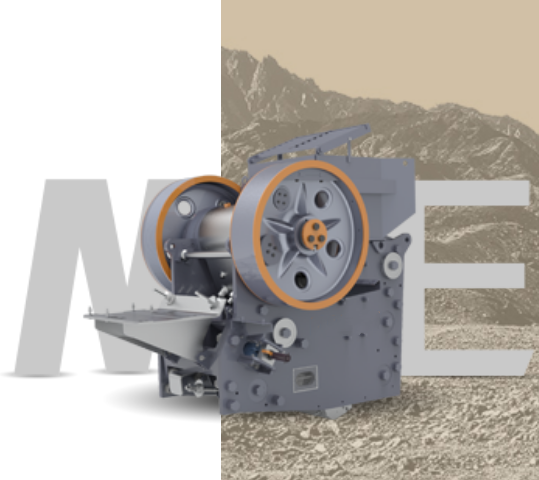Watching a jaw liner to the crushing application is a crucial factor behind achieving maximum liner wear life
ME series jaw crusher
In the world of crushing equipment, the importance of a jaw liner cannot be overstated. The ME series jaw crusher, known for its efficient and durable design, relies on a strong jaw shaft to achieve maximum liner wear life. This crucial factor is what sets the ME series apart, making it a reliable choice for crushing operations involving various rocks and ores. The careful attention to the jaw liner in the crushing application ensures that the equipment can withstand the demands of heavy-duty use, providing long-lasting performance and reliability.

The ME series jaw crusher stands out as a testament to the significance of a well-designed jaw liner in the crushing process. Its robust jaw shaft design allows for efficient and effective crushing operations, making it suitable for a wide range of applications. Whether dealing with hard rocks or challenging ores, the ME series excels in delivering consistent performance, thanks in part to the careful consideration given to the jaw liner. This attention to detail ensures that the equipment can endure the rigors of demanding crushing tasks, ultimately contributing to its longevity and reliability.
As industries continue to rely on crushing equipment for various applications, the role of the jaw liner in achieving maximum wear life cannot be overlooked. The ME series jaw crusher, with its emphasis on a strong jaw shaft design, exemplifies the importance of this factor. By prioritizing the durability and efficiency of the jaw liner in the crushing application, the ME series offers a dependable solution for businesses and operations seeking reliable and long-lasting crushing equipment. With its ability to handle diverse materials and maintain optimal performance, the ME series stands as a testament to the impact of a well-engineered jaw liner in the world of crushing technology.
 O'zbek
O'zbek slovenský
slovenský Azərbaycan
Azərbaycan Қазақ
Қазақ Latine
Latine ລາວ
ລາວ български
български नेपाली
नेपाली فارسی
فارسی Javanese
Javanese Українська
Українська Lietuvos
Lietuvos Română
Română Slovenski
Slovenski پښتو
پښتو Punjabi
Punjabi Bosanski
Bosanski Malti
Malti Galego
Galego Afrikaans
Afrikaans Esperanto
Esperanto 简体中文
简体中文 Српски
Српски मराठी
मराठी Ελληνικά
Ελληνικά čeština
čeština Polski
Polski ไทย
ไทย Nederlands
Nederlands Italiano
Italiano Tiếng Việt
Tiếng Việt Deutsch
Deutsch français
français русский
русский Português
Português Español
Español 한국어
한국어 Svenska
Svenska Malay
Malay اردو
اردو norsk
norsk Indonesia
Indonesia عربى
عربى Gaeilge
Gaeilge Türk
Türk Pilipino
Pilipino हिन्दी
हिन्दी Dansk
Dansk বাংলা
বাংলা English
English


The Expanding Role of Long Distance Conveyors in Modern Industrial Applications
In the modern era of industrial automation and large-scale material handling, the Long Distance Conveyor has emerged as a crucial technology for improving efficiency and reducing transportation costs. Designed to move bulk materials over extended distances, these conveyors are now widely applied in mining, cement production, power generation, port logistics, and other heavy industries that require reliable, continuous transport systems.
Read MoreThe Expanding Applications of Rotary Drum Mixers in Modern Industries
In today’s fast-paced industrial environment, the Rotary Drum Mixer has become a vital piece of equipment across various sectors due to its reliability, efficiency, and ability to handle diverse materials. Known for its robust design and uniform mixing performance, this machine plays a key role in industries such as pharmaceuticals, chemicals, food processing, construction, and agriculture.
Read MoreJuli Engineering: A Trusted Supplier of Durable Coal Screw Feeders for Reliable Material Handling
In the fast-evolving industrial sector, efficiency, durability, and reliability are essential in material handling systems. Juli Engineering, a leading Durable Coal Screw Feeder supplier, continues to set industry standards with its high-quality products designed for continuous and precise coal feeding applications. With a reputation for engineering excellence and long-term performance, Juli Engineering provides advanced screw feeder solutions that meet the demanding needs of power plants, mining operations, and industrial production lines.
Read More